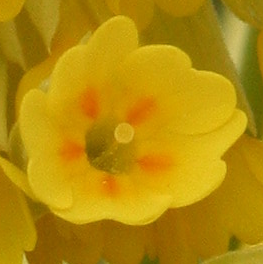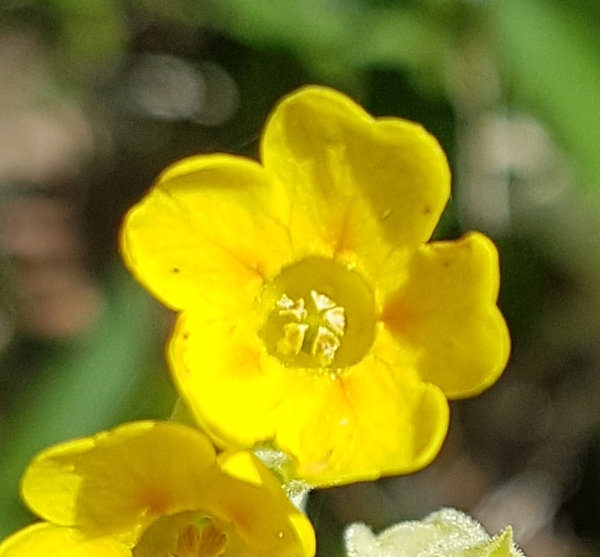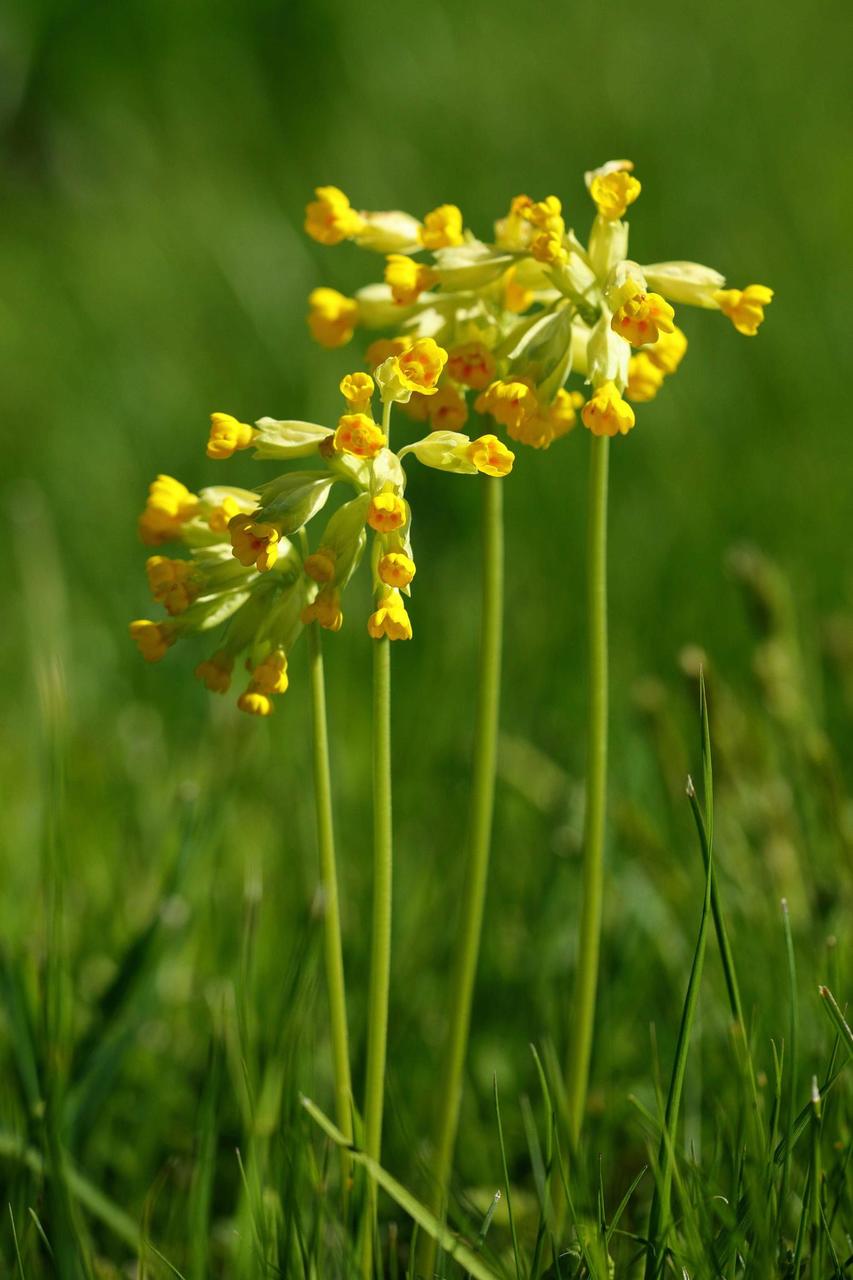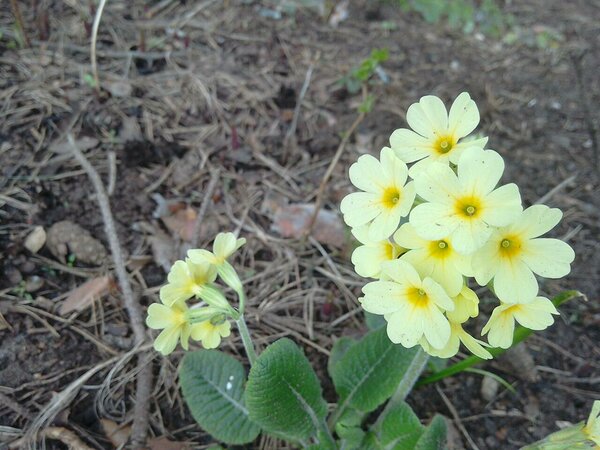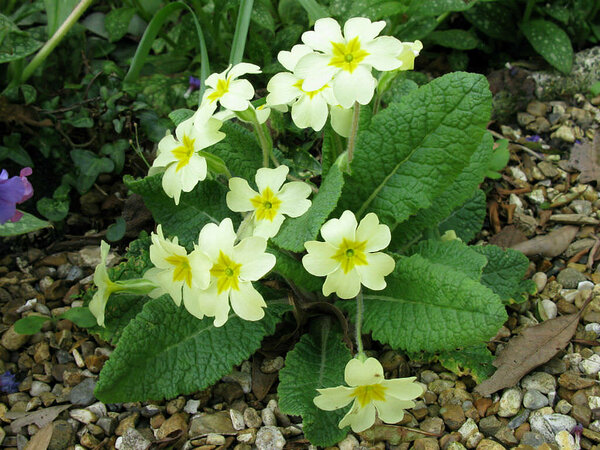Already Charles Darwin, the author of the theory of evolution, was deeply interested in cowslips. By studying the cowslip as a characteristic grassland plant, we hope to obtain knowledge not only about this species, but also to enhance understanding about the status of other similar species. Many of you have heard of lab rats, fruit flies and baker's yeast as commonly studied model organisms. Cowslip serves almost as a model species in our studies.
Collectively gathered information about the cowslip helps to provide insights into the well-being of the cowslip and other grassland plants. With the help of this information, we can assess the influence of landscape change on some important aspects of biodiversity. In particular, cowslips can indicate whether the biotopes they inhabit are doing well or have taken a turn for the worse.
The cowslip is heterostylous – it means that different plant individuals have two different types of flowers. Let us call these different types as S-morphs and L-morphs. When looking at S-morphs from above, you can easily spot five anthers, while in L-morphs only one stigma is externally visible (look at the photo). S-morph stands for the shorter version of a short-styled morph indicating to the short female reproductive organ hidden in the corolla and longer male reproductive organs visible from above. L-morph stands for a long-styled morph with long female reproductive organ, thus also visible externally, and shorter male reproductive organs (stamens) hidden in the corolla.
S-morph
To successfully produce offspring, cowslips with L-morphs need spread their pollen grains to individuals, which bear S-morphs. And this system also works the other way round - the pollen from S-morphs has to reach L-morphs. In this way, the plant cannot pollinate itself and prevents genetic erosion. Cross-pollination between different types of flowers further encourages the exchange of genetic material and thus enhances genetic diversity. High genetic diversity is a very important factor in preserving plants’ viability and long-term resilience. Read more about genetic diversity here. Thus, also plants care with whom they mate!
Pollen flow between these two different types of flowers can take place only thanks to pollinating insects who act as mediators in this complicated 'marriage arrangement'. To ensure the well-being of the plant, we also have to secure the well-being of pollinating insects – wild bees and honeybees, bumblebees, butterflies and other little invaluable helpers for plants.
In cowslip populations, the occurrence of individuals bearing either S-morphs or L-morphs is usually equal, i.e. more or less 50:50. Imbalance reduces cowslips’ opportunities to find a suitable mate, which impedes pollination and the exchange of genetic material. This, in turn, reduces plants’ long-term viability.
Cowslips' preferred habitats – traditionally managed grasslands – have become increasingly rare in contemporary landscapes. The disappearance of grasslands causes a decline in plant populations that depend on them as a habitat. A massive decline in cowslip populations can cause imbalances in the occurrence of L- and S-morphs, sometimes even to the extent that one of those types completely disappears from the habitat. That is precisely the kind of a possible shift in the balance between the L- and S-moprhs caused by changes in the landscape that we want to study – with your help.
How to recognise the cowslip?
The cowslip (Primula veris) is a spring flower. It is a perennial plant, which
means that the same plant grows and blossoms in the same place for many years.
Species that can be sometimes mixed up with cowslip are the oxlip (Primula elatior) and the common primrose
(Primula vulgaris). Primula species can also easily
hybridize with each other. Make sure you find the cowslip when making the
observation!
How does the cowslip look like?
The cowslip is an herbaceous plant with the average height range from 10 to 30 cm. It has green elongated leaves up to 20 cm long. One plant can have multiple stems. Cowslip has deep yellow bell-shaped nodding flowers with orange dots in clusters of 5 to 16 blooms together, usually keeping to one side.
How to distinguish the cowslip from other similar species?
Compared to the oxlip, cowslip’s flowers are
smaller, they are bright yellow and small orange spots are visible inside the
flower. The flowers of oxlips are usually larger and pale yellow. Cowslip’s
flowers are bell-shaped, while the flowers of the oxlip keep more open. The
common primrose has a short stalk and the flowers are very pale yellow or even
white. Different primroses are also common plants grown in home gardens and can
easily spread from the garden to the wild. They can have flowers of different
colors, such as purple, red, orange and pink. Cowslip has only bright yellow
flowers in nature.
Cowslips are one of the first heralds of the spring. It depends on the region and the weather, but it usually begins to blossom at the beginning of May and flowers for a couple of weeks. In cooler weather, the blossoming can also begin later and last until mid-June. In warmer regions, however, flowering can start already in April.
Where does the cowslip grow?
The cowslip is quite common in Europe with a Red List status of 'least concern'. However, due to loss of habitats, it is not doing so well anymore. Cowslips prefer dry or moderately moist limey soils, which are more common in coastal areas. However, this does not mean that cowslips do not occur on more acidic soils as well. Cowslips can be found growing in traditionally managed grasslands, parks, forest edges and by the roadside. It usually prefers sunnier spots.
What to do when the flower doesn’t look like either flower
type?
Although very rare, it is possible to find such plants that are neither an S-morph or an L-morph. These are so called middle types, where the style and anthers are at the same length - we call them homostyles. Homostylous individuals can evolve during a mutation and all the flowers of the same plant should look the same. If you happen to find such plants, you can skip counting them for the observation, but please let us know about them! You can add a comment to the observation form and add a picture of the homostyle flower but it would be very useful if you send us an email (info@cowslip.science) with the picture and exact location where the flower was found. This way we can collect a leaf sample for genetic analyses or when possible we ask you to send the leaf material to us. With reporting such findings you can help us understand heterostyly on a whole other level.
